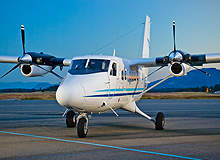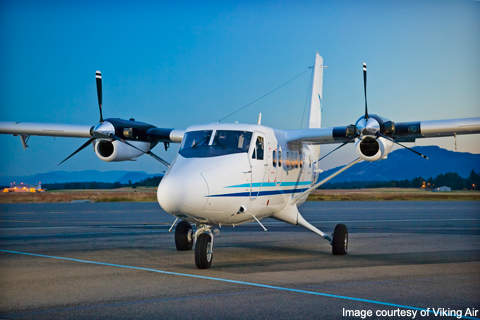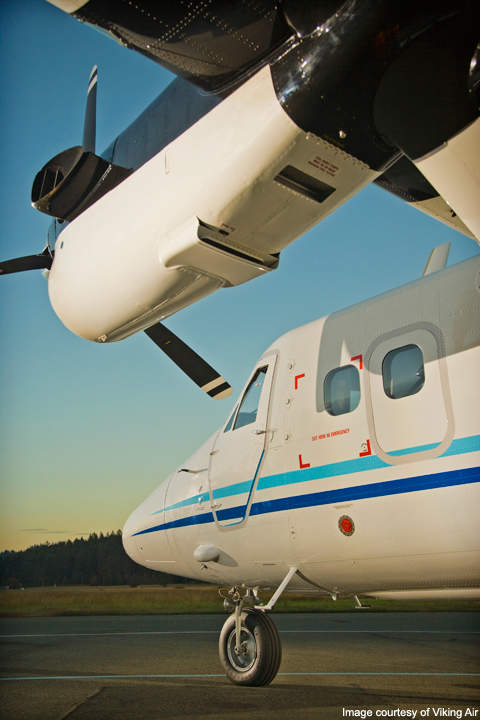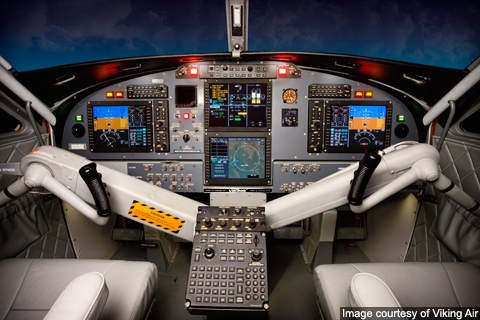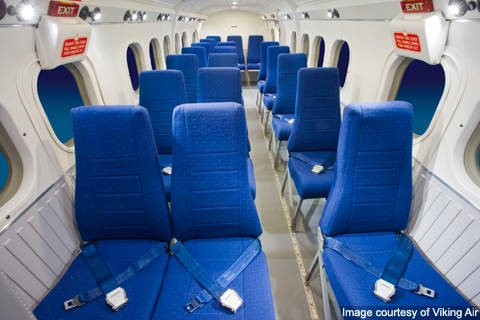The DHC-6-400 Twin Otter is a new aircraft series in Viking Air’s DHC-6 Series. It is a twin engine, light utility aircraft. Its predecessors include DHC-6-100, 110, 200, 300, 300M, 310, 320 and 300S.
It is a high-winged, unpressurised commercial aircraft principally used to execute marine mammal aerial surveys, remote sensing missions, atmospheric air chemistry sampling and atmospheric eddy flux and concentration gradient assessments.
Viking Air unveiled its decision to build DHC-6-400 during the Farnborough Air Show held on 17 July 2006. The development began in 2007 with deliveries planned until 2014.
Its maiden flight took place on 16 February 2010 in Calgary, Alberta and the aircraft entered service in July 2010.
Viking Air has also developed an upgraded model of the DHC-6-400 called Guardian 400 which is principally used for maritime surveillance, security, sovereignty, and search and rescue operations. The upgraded version is equipped with electro-optic and infra-red cameras, a spotter camera, a laser ranger finder and a laser illuminator.
Orders and deliveries
Global Aerospace Logistics (GAL) awarded a $65m contract to Viking Air on 16 June 2009 for 10 DHC-6-400 aircraft of which six are land plane configured and the remaining are Guardian 400s. The deliveries are scheduled between 2010 and 2012.
Air Loyaute ordered two DHC-6-400 aircraft in June 2009.The aircraft will be additionally fitted with medical evacuation stretcher capability. Deliveries will begin in 2011.
The Vietnam Navy ordered six DHC-6-400 aircraft in May 2010. The aircraft will be fitted with air conditioning, galley and lavatory installations. Deliveries are planned for between 2012 and 2014.
The first DHC-6-400 aircraft was delivered to Zimex Aviation on 20 June 2010 during the Farnborough Air Show.
Design and features
Designed to operate in adverse weather conditions, the DHC-6-400 has a robust airframe that is constructed with composite materials to reduce the aircraft’s overall weight by 25% to 40%.
The aircraft features two cockpit doors, a long nose structure, circuit breakers and switches, and bubble windows. Other features include exhaust stacks, an airstair door, cockpit sun-visor system, a pressure refuelling system, litter racking, pulselite landing lights, de-icing equipment and taxi lights.
Assembly and construction
The assembly of the first four DHC-6-400 aircraft is being carried out at Viking’s final assembly facility in Calgary, Alberta. Detailed assemblies are advancing in the manufacturing facility at Victoria in British Columbia.
Flight deck
DHC-6-400 boasts a Honeywell Apex IFR digital flight deck, which accommodates a pilot and co-pilot. The flight deck features two primary flight displays (PFD), a multifunctional display (MFD), a flight data recorder (FDR) and a cockpit voice recorder (CVR).
Cabin
The cabin is 5.61m-long and 1.50m-high, with a volume of 10.87m². It accommodates 19 passengers in two seating areas. Two main cabin doors are fitted on either side of the fuselage.
Avionics
The avionics suite includes colour weather radar, an interactive navigation system, radar altimeter, a dual global positioning system (GPS) or Loran-C navigation systems. Enhanced ground proximity warning system (EGPWS), traffic awareness and collision avoidance system (TACAS) for providing situational awareness to the pilot are incorporated.
Honeywell Primus Apex is the prime contractor involved in the manufacturing of the avionics system.
Engines
The Viking DHC-6-400 is powered by two Pratt & Whitney Canada PT6A-34 turboprop engines, each producing 559kW of output power. Each engine is fitted with two Hartzell three bladed propellers made of aluminium. The propeller can turn at a constant speed of 2,200rpm.
An epicyclic speed diminution gearbox is set-up in the engine to reduce propeller noise by optimising the output speed.
Landing gear
The aircraft is fitted with a standard tricycle type landing gear comprising Cleveland wheels and brakes. It can be reconfigured with amphibious floats, skis, wheel skis or intermediate floatation landing gear to land in rough field environments.
Performance
The DHC-6-400 can climb at the rate of 8.1m/s. The maximum and cruise speeds of the aircraft are 314km/h and 278km/h respectively. The stall speed is 107km/h. The range and service ceiling are 1,690km and 7,620m respectively. The maximum endurance is nine hours.

